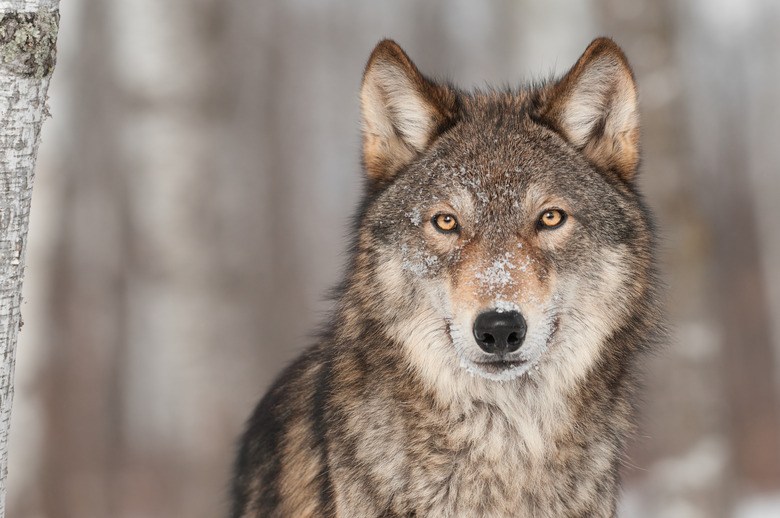About A Wolf's Sense Of Smell
In North America, the most common species of wolves are Grey wolves and the Mexican Grey wolves. Wolves usually live in packs of five to eight wolves and use a variety of methods to communicate with each other. Wolves communicate through howling, visual poses, and body language. However, their most fully developed sense and communication form is their sense of smell.
Wolves use their sense of smell in order to hunt, to mark and understand pack territory, to engage in social pack relationships, and more.
Wolf Sense of Smell: The Facts
Wolf Sense of Smell: The Facts
An animal who is downwind of wolf can tracked by its scent thanks to the amazing wolf sense of smell. In good weather conditions, a wolf can smell its prey from about 1.75 miles away. As the pack of wolves moves closer towards the prey, they will maneuver ahead of the prey for final confrontation.
Just by the wolf sense of smell, the pack can find and identify other pack members. Scientists think the wolves maybe able to tell the age and gender of the wolf by their scent alone. They can also avoid other predators or enemies by this detection system.
Function
Function
The wolf has two scent glands: one near its rear and another near the base of the tail. These glands can be used to mark the wolf's territory, which can range from 50 to 1,000 square miles. The dominant wolves in pack (both male and female) use raised leg urination to mark the trail with urine and feces every 100 yards.
They tend to mark the boundaries of their territory twice as much as the center. These boundaries tell the other wolf packs to stay away and that the area is already occupied. One wolf pack will defend its territory from another wolf pack, if necessary.
The amazing sense of smell also functions as protection. They'll be able to sense the presence of other packs, of larger and more dominant wolves, the borders of territory, and more.
Identification
Identification
A wolf nose holds the key to its incredible sense of smell. Wolves have a sense of smell about 100 times greater than humans and they use this keen sense while hunting.
Compared to domestic dogs, most wild wolves have even higher level of scent recognition. In a wolf nose, the part that is receptive to smell is nearly 14 times greater than a human nose. Although the wolf nose excels at scent detection, the smelling surface must be folded many times to fit in such a small area on the wolf's face.
Significance
Significance
Wolves, like some breeds of dogs, like to roll themselves in a foul-scented items, like a rotting carcass. They first lower their heads and shoulders, then rub to coat the rest of their bodies and fur with the scent. Scientists don't know exactly why wolves "scent-roll," but they have several theories.
One theory is that the wolves want to familiarize themselves and the rest of the pack with a particular scent. Another theory is that scent-rolling disguises the wolves' own scent for a particular purpose. The final theory is that scent-rolling makes the wolf appear more attractive to other wolves.
Features
Features
Pheromones are chemical markers that are used to communicate with other wolves. Specialized glands located on the end of the tail, toes, eyes, sexual organs, and skin secrete these pheromones, which produce an individualized scent, similar to a human fingerprint. By smelling these pheromones, male wolves can tell when female wolves are ready for mating. This along with the social aspects of a wolf's scent and sense of smell make it a pivotal part of the mating process.
For example, the alpha female won't mate with any male, and not all males would smell the alpha female in heat and try to mate with her, as this would go against the social order of the pack.
Cite This Article
MLA
Mangaly, Jennifer. "About A Wolf's Sense Of Smell" sciencing.com, https://www.sciencing.com/wolfs-sense-smell-4565769/. 22 November 2019.
APA
Mangaly, Jennifer. (2019, November 22). About A Wolf's Sense Of Smell. sciencing.com. Retrieved from https://www.sciencing.com/wolfs-sense-smell-4565769/
Chicago
Mangaly, Jennifer. About A Wolf's Sense Of Smell last modified March 24, 2022. https://www.sciencing.com/wolfs-sense-smell-4565769/
